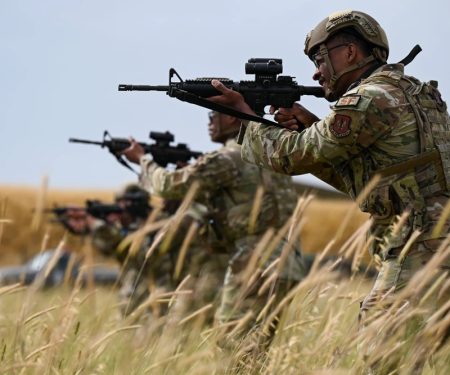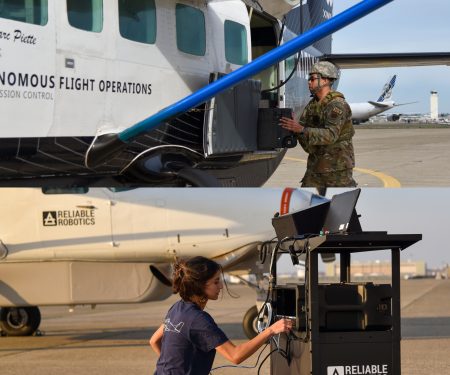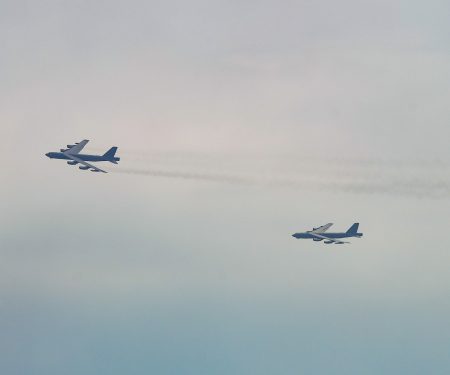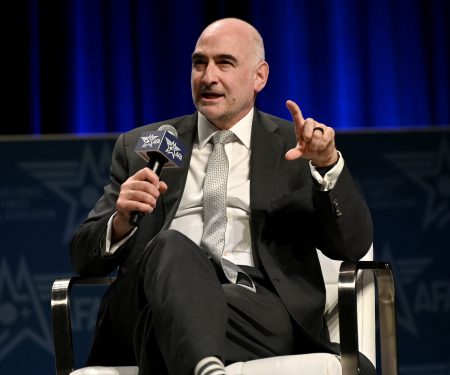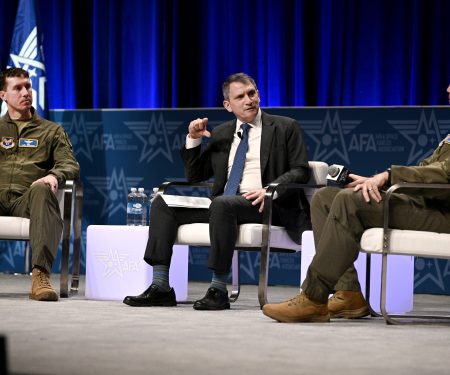Radar Sweep
Macron Refuses to Rule Out Putting Troops on Ground in Ukraine in Call to Galvanize Europe
France’s President Emmanuel Macron said on Feb. 26 he refused to rule out sending ground troops to Ukraine, but said no consensus existed on the step, at a meeting of 20 mainly European leaders in Paris convened by Macron to ramp up the European response to the Russian military advances inside Ukraine.
South Korea Eyes Mixed Fleet of Manned, Unmanned Warplanes
With South Korea’s KF-21 fighter jet nearing mass production, the country is looking to incorporate unmanned technology that can operate alongside the Air Force’s fleet. The military’s growing interest in manned-unmanned teaming comes amid a declining pool of 18-year-old conscripts and as relations with neighboring North Korea worsen.
OPINION: China Is Running Out of Lines to Cross in the Taiwan Strait
“The PLA’s now-normalized presence around Taiwan raises the risk of an accidental confrontation. But over the longer term, it has also gradually created a dangerous sense of complacency in Taipei and Washington while giving China the crucial operational practice it might one day need to seize the island,” writes Ben Lewis, an independent defense analyst specializing in China and Taiwan military and security affairs.
Rocket Lab Won’t Be Ready to Launch Its New Rocket by Year’s End, Documents Suggest
Despite its promises, Rocket Lab won’t be ready to launch its new medium-lift vehicle by year’s end, documents suggest. And that means that no new rocket startups will be able to handle a special pool of Space Force satellite launches that the Pentagon had hoped would jumpstart a new era of competition—at least not yet.
Air Force Academy Battles Wildfire at West Monument Creek
Firefighters are working to contain a large wildfire that broke out along the southern grounds of the U.S. Air Force Academy in Colorado on Feb. 25. “While some hot spots remain, the fire is no longer spreading, and the forecasted precipitation for Feb. 27 bodes well for firefighting operations,” the academy said the evening of Feb. 26. “The footprint of the fire has not significantly changed from this morning and the fire is not fully contained.”
Internal Pentagon Review Finds No ‘Ill Intent’ Behind Austin Hospitalization Secrecy
A newly released internal Pentagon review into the secrecy surrounding Defense Secretary Lloyd Austin’s January hospitalization for complications from cancer surgery has essentially absolved anyone in the department from wrongdoing. The 30-day review did not find “any indication of ill intent or an attempt to obfuscate,” according to a three-page unclassified summary released Feb. 26.
OPINION: Why the Pentagon Needs a Quantum Czar
Quantum computing, at least on paper, is a game changer for national security, and the U.S. government has been pursuing it accordingly. But those efforts are scattershot, and often include overlapping areas of focus. In this new op-ed, Rebecca Grant of IRIS Research calls for Congress to appoint a lead DOD official to wrangle the various quantum lines of research.
Space Force Bucks Fixed-Price Trend for Nuclear Command Satellites
In a departure from recent guidance, the Space Force will use cost-plus contracts for its high-priority strategic communications satellite program. Space Force acquisition executive Frank Calvelli said Feb. 23 that the service has decided to not use fixed-price contracts for the Evolved Strategic Satellite Communications System (ESS), a critical component of the U.S. military’s nuclear command, control, and communications (NC3) network that provides nuclear-survivable communications.
Wisconsin Air National Guard’s 115th Fighter Wing Tests Its Skills with the Unit’s F-35s
The Wisconsin Air National Guard’s 115th Fighter Wing has completed the first training deployment of the unit’s F-35A Lightning II aircraft. On Feb. 23, more than 150 Airmen finished the Weapons System Evaluation Program’s Combat Archer exercise at Tyndall Air Force Base, Fla, according to an Air National Guard news release.
‘Tactical ISR’ from Space Requires DOD, NRO Policy Changes: Calvelli
The Defense Department needs to fully control use of future space-based systems being jointly developed with the Intelligence Community to gather battlefield intelligence, surveillance and reconnaissance (ISR), Air Force space acquisition head Frank Calvelli said Feb. 23.
What’s Next for the New CJADC2 Minimum Viable Capability
The Pentagon’s Chief Digital and Artificial Intelligence Office is poised to put its new and highly anticipated minimum viable capability for Combined Joint All-Domain Command and Control (CJADC2) to work at the Army’s latest Project Convergence experiments kicking off this week.
Just How Fast Is The F-15EX Really?
A story published during the Singapore Airshow last week gained much attention, specifically the claim that the F-15EX Eagle II—the U.S. Air Force’s newest F-15 incarnation—can reach a speed of “nearly Mach 3.” If that sounded too good to be true, that’s because it was. But there’s no doubt that the Eagle II can hit a very impressive speed.
